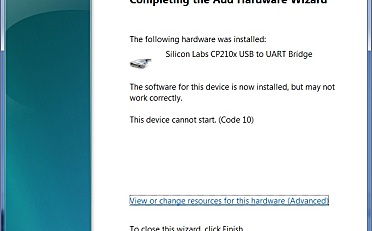释放双眼,带上耳机,听听看~!
String object允许你用多种方法操作文本的字符串。你可以往字符串里增加字符,组合字符串,获得字符串长度,搜索和替换子字符串,等等。这个教程示范怎么初始化串口对象。
简介
- String object允许你用多种方法操作文本的字符串。你可以往字符串里增加字符,组合字符串,获得字符串长度,搜索和替换子字符串,等等。这个教程示范怎么初始化串口对象。
String stringOne = "Hello String"; // using a constant String
String stringOne = String('a'); // converting a constant char into a String
String stringTwo = String("This is a string"); // converting a constant string into a String object
String stringOne = String(stringTwo + " with more"); // concatenating two strings
String stringOne = String(13); // using a constant integer
String stringOne = String(analogRead(0), DEC); // using an int and a base
String stringOne = String(45, HEX); // using an int and a base (hexadecimal)
String stringOne = String(255, BIN); // using an int and a base (binary)
String stringOne = String(millis(), DEC); // using a long and a base
String stringOne = String(5.698, 3); // using a float and the decimal places- 所有的函数都可以用来声明串口对象。它们都会得出一个对象(包括用任何String函数操作一个字符串的字符)。观察它们运行,更新下面代码到Arduino 或者 Genuino 开发板上,并打开 Arduino IDE 串口监视器。你会看到每个声明的结果。对比每个用println() 打印出来的结果和上面的声明。
硬件要求
- Arduino or Genuino 开发板
电路
- 这个例子不需要连接额外的电路,除了你的开发板需要连接到你的电脑,并且打开Arduino IDE的串口监视器窗口。

样例代码
void setup() {
// Open serial communications and wait for port to open:
Serial.begin(9600);
while (!Serial) {
; // wait for serial port to connect. Needed for native USB port only
}
// send an intro:
Serial.println("\n\nString Constructors:");
Serial.println();
}
void loop() {
// using a constant String:
String stringOne = "Hello String";
Serial.println(stringOne); // prints "Hello String"
// converting a constant char into a String:
stringOne = String('a');
Serial.println(stringOne); // prints "a"
// converting a constant string into a String object:
String stringTwo = String("This is a string");
Serial.println(stringTwo); // prints "This is a string"
// concatenating two strings:
stringOne = String(stringTwo + " with more");
// prints "This is a string with more":
Serial.println(stringOne);
// using a constant integer:
stringOne = String(13);
Serial.println(stringOne); // prints "13"
// using an int and a base:
stringOne = String(analogRead(A0), DEC);
// prints "453" or whatever the value of analogRead(A0) is
Serial.println(stringOne);
// using an int and a base (hexadecimal):
stringOne = String(45, HEX);
// prints "2d", which is the hexadecimal version of decimal 45:
Serial.println(stringOne);
// using an int and a base (binary)
stringOne = String(255, BIN);
// prints "11111111" which is the binary value of 255
Serial.println(stringOne);
// using a long and a base:
stringOne = String(millis(), DEC);
// prints "123456" or whatever the value of millis() is:
Serial.println(stringOne);
//using a float and the right decimal places:
stringOne = String(5.698, 3);
Serial.println(stringOne);
//using a float and less decimal places to use rounding:
stringOne = String(5.698, 2);
Serial.println(stringOne);
// do nothing while true:
while (true);
}

















